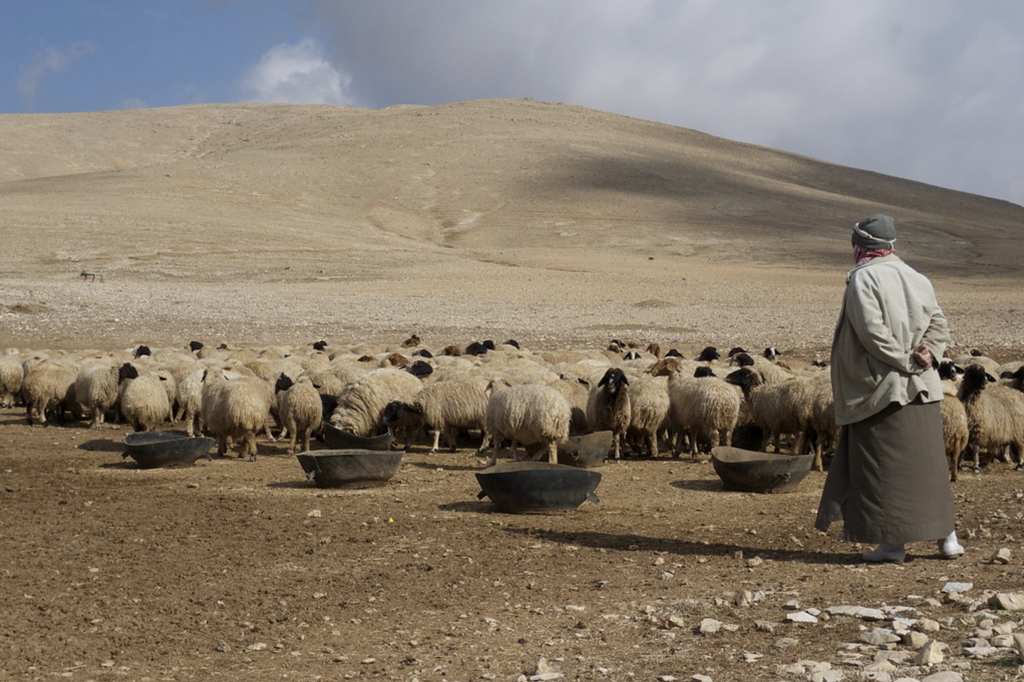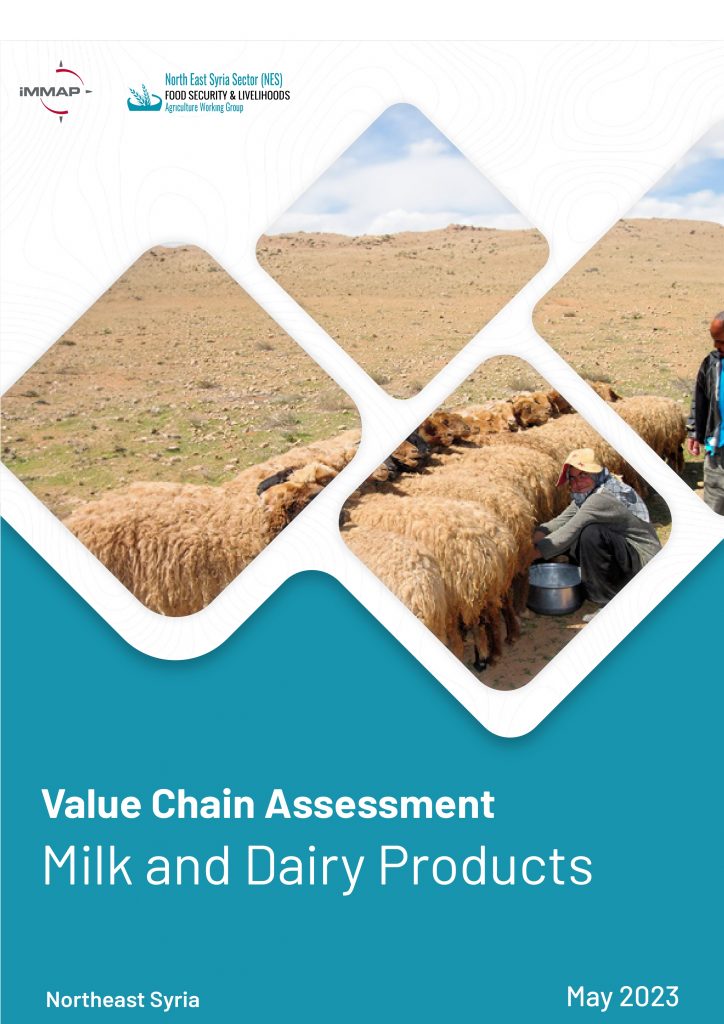Nestled within the Fertile Crescent, flanked by the Tigris and Euphrates, Northeast Syria (NES) is renowned for birthing agriculture and innovative practices: The early groundworks in farming, irrigation, and livestock domestication were laid in the region. NES's deep-rooted dairy traditions trace back to these Mesopotamian origins.
Climate and Conflict Convergence Alter the Northeast Syria Dairy Landscape
Northeast Syria's dairy value chain grapples with a myriad of production challenges, including by economic hurdles, environmental changes, and conflict legacies.

iMMAP Inc.'s recent assessment highlighted how NES dairy industry stands at a pivotal juncture, entangled between post-war economic challenges and the impacts of climate change. As the specters of climate change and lingering conflict loom large, every facet of dairy industry chain -- from pasture to plate—faces unprecedented challenges.
A key highlight from iMMAP Inc.'s assessment underscores the struggles of NES milk producers. Scarce, expensive feed strains livestock health, thereby impacting milk quality. Coupled with restricted veterinary access and post-production hurdles like limited storage and rising expenses, NES's deep-rooted dairy traditions face momentous challenges.
As climate and conflict reshape Northeast Syria's dairy industry, we must work towards lasting solutions. By supporting resilient farming, improving supply chains, and ensuring fair pay for farmers, we can protect heritage and the well-being of the people.
A significant 73% of dairy farmers in the area feel they are not fairly compensated for their milk. This sentiment is most acute in Al-Hasakeh, where individuals committed to animal husbandry and preserving NES's dairy traditions feel a deep unease. This resentment stems from a mix of reasons, including rising production costs and the unpredictable changes in how much milk is sold fo, putting under the spotlightthe problems that farmers face, in their quest for fair compensation for the hard work they put into their farms.
Over the past three decades, the Middle East has witnessed a troubling trend of desertification, where once-productive lands are turning into arid wastelands due to environmental degradation. While other regions facing post-conflict scenarios or droughts have encountered similar challenges, the unique combination of climate adversities, including desertification, and lingering conflict in NES creates a complex web of obstacles that the dairy sector must navigate.
In NES, milk collectors function as intermediaries between small-scale farmers and larger dairy processors. Given the fragmented and often limited nature of dairy farming in the region, these collectors are crucial in aggregating milk quantities, ensuring consistent quality, and facilitating its transport to processing facilities. As highlighted by iMMAP Inc.'s research, these milk collectors grapple with significant challenges. Unpredictable supplies from farmers, coupled with transport limitations and rising fuel costs, continually threaten the milk's quality and distribution.
Dairy in NES is more than just food—it's a tapestry of cultural heritage. Yet, accessing beloved staples like cottage cheese, animal ghee, and kashkaval is often met with unpredictability and inflated prices.
There’s an underlying urgency to fortify NES's dairy landscape. The World Health Organization's 2022 report paints a grim picture: NES, comprising the governorates of Deir-Ez-Zor, Ar-Raqqa, and Al-Hassakeh, grapples with malnutrition rates that outpace the rest of Syria. With over half of the 5.5 million Syrians needing nutrition assistance residing in NES, bolstering the dairy sector is not just about tradition or economy—it's crucial for the health and future of its people.
iMMAP Inc.'s report offers a multi-pronged approach for actionable progress. From financial and veterinary support for livestock breeders to investments in state-of-the-art dairy processing facilities, these steps are designed to address the pressing challenges the industry faces. The emphasis on cooperative infrastructure and support mechanisms fosters a collaborative environment that's essential for long-term growth. By investing in enhancements to storage, transportation, and marketing capabilities, there is an opportunity not only to improve the current landscape but also to pave the way for future opportunities. Additionally, prioritizing sustainable and environmentally friendly practices can secure a resilient and prosperous dairy value chain for future generations.

